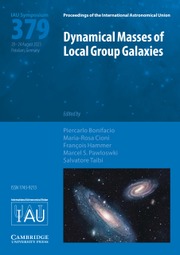No CrossRef data available.
Article contents
The abundance discrepancy in ionized nebulae: which are the correct abundances?
Published online by Cambridge University Press: 06 October 2025
Abstract
Ionized nebulae are key to understanding the chemical composition and evolution of the Universe. Among these nebulae, H ii regions and planetary nebulae are particularly important as they provide insight into the present and past chemical composition of the interstellar medium, along with the nucleosynthetic processes involved in the chemical evolution of the gas. However, the heavy-element abundances derived from collisionally excited lines (CELs) and recombination lines (RLs) do not align. This longstanding abundance discrepancy problem calls into question our absolute abundance determinations. Which of the lines (if any) provides the correct heavy element abundances? Recently, it has been shown that there are temperature inhomogeneities concentrated within the highly ionized gas of the H ii regions, causing the reported discrepancy. However, planetary nebulae do not exhibit the same trends as the H ii regions, suggesting a different origin for the abundance discrepancy. In this proceedings, we briefly discuss the state-of-the-art of the abundance discrepancy problem in both H ii regions and planetary nebulae.
Information
- Type
- Contributed Paper
- Information
- Proceedings of the International Astronomical Union , Volume 19 , Symposium S384: Planetary Nebulae: A Universal Toolbox in the Era of Precision Astrophysics , December 2023 , pp. 370 - 378
- Copyright
- © The Author(s), 2025. Published by Cambridge University Press on behalf of International Astronomical Union


